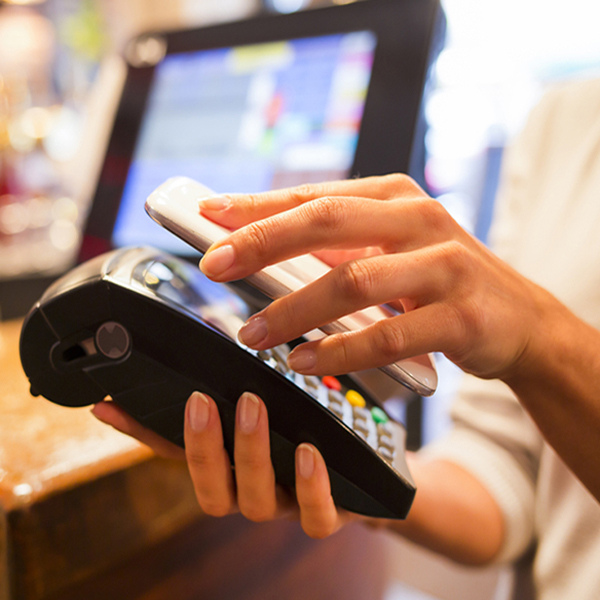Ecommercestrategychina.com uses cookies and other technologies to provide you a better browsing experience. You can get more information regarding the use of cookies, or decline it whenever by clicking Privacy Policy. By using this site or clicking “Okay”, you give us the consent to the use of cookies.
OKAY
With its massive promotion for five years, China's mobile payment has reached a penetration rate of 90% with 1 billion mobile Internet users. In addition to broadband and mobile phones, it has the highest market penetration in China. Mobile payment is even considered one of China’s four great inventions in the new era.
Recently, Ipsos China (one of China’s largest survey-based market research companies) conducted consumer surveys for third-party mobile payment markets in major Chinese cities. Let us take a look at the current situation and trends in mobile payment confirmations in China from this survey.
By 2018, the number of mobile payment users in China was about 890 million. TenPay (WeChat Pay) and Alipay dominates the market and has 820 million users and 650 million users respectively. User penetration rates for WeChat pay and Alipay are 85.4% and 68.7% respectively. The usage rates of the four main types of payment scenarios are: 95% for personal use, 86% for offline consumption, 82% for online consumption and 20% for financing. (WeChat and TenPay are closely related. WeChat is a front-end channel and Tenpay is the one that completes the payment transfer.) The user penetration rates of first-, second-, and third-tier cities were 90.4%, 93.5% and 92.4%, respectively. The relatively backward economic regions have not lagged behind in the popularity of mobile payments, which is a good indication of the trend that "technology is levelling the world". Data from Alipay also shows that there are 11 provinces in the central and western regions where the share of mobile payments among Alipay users exceeds 90%. The convenience of using the mobile Internet powered by smartphones effectively fills the "data gap" in remote areas.
According to the survey, the proportion of people's daily expenses paid by third parties has increased by 3% to 48% compared to the previous year. However, the share of bank cards/credit cards (online and offline payments) and cash payments has declined slightly. The annual transaction scale of third-party mobile payments reached RMB106.78 trillion and the average transaction was RMB 141. This shows that consumers are more accustomed to using mobile payments to complete some large transactions. And awareness of safety concerns or other usage barriers is decreasing.
1.Social media offers new opportunities for mobile payments and prevents their demise
Social payments based on interpersonal relationships are an important factor in further increasing payment penetration. This is the advantage of WeChat Pay which is based on WeChat and QQ. It mainly includes two application scenarios: Chinese lucky money (also known as Hongbao) and transfers. Once an amount has been saved, users have an impulse to spend the credit. As a result, WeChat payments are often used offline.
The data shows that the per capita running time of Tencent's social software, such as WeChat, is more than 30 minutes per day, which helps promote payment habits through social dissemination. Recently, WeChat unveiled a feature that provides a window to observe the mobile payment habits of the elderly. Careful of new things, elderly people tend to view card-bound behaviour with suspicion. So children should bind the cards to enable their parents to consume. This can greatly reduce the inhibition and mistrust, and parents can easily become active users of mobile payments.
In online consumer business, Alipay's strength is e-commerce, while the advantageous payment scenario of WeChat Pay is recharging games. In many specific offline consumption scenarios, such as supermarket sales, offline catering, daily travel orders, ticketing/entertainment, etc., WeChat Pay and Alipay may be very similar.
2.Mobile payment market competition for public transport
In 2017, public transport was at the forefront of the mobile payment industry and attracted many resources from WeChat Pay, Alipay, UnionPay, etc. In 2018 and even in the coming years, it will receive a lot of attention.
UnionPay first authorised the electronic payment for public transport. Later, Alipay's electronic online bus card and Tencent’s Metro quick response (QR) code turned the mobile payment scenario into a highly competitive battlefield. Currently, the Tencent Metro QR code has been introduced in more than 70 cities, mainly in southern China, southwest China and northeast China. The public transport system is a high-frequency trading scenario with high viscosity. No player will be absent in the face of such a large market for rigid needs.
3.The internationalisation of mobile payments is accelerating
Although the internationalisation of mobile payments is difficult to achieve in the short term, the big Internet giants have never stopped their pace to expand overseas business from Southeast Asia to Europe and the United States. For example, WeChat Pay is now available in 40 countries and regions, support direct billing of 13 foreign currencies, and have received a payment license in Malaysia. The UnionPay overseas cooperation network is more extensive. The card acceptance network has been extended to 168 countries and regions, and the features of payment by mobile phone and QR code is also increasing. It is supported by merchants in more than 10 countries and regions. Alipay has access to more than 200,000 offline merchants in 30 countries and regions in Southeast Asia, Europe and the United States, and has worked with local brands in 9 countries and regions to complete the layout of their local mobile payment wallets. And Alipay's parent company, Ant Financial Service, is targeting the development of countries where mobile payment just started this year.
In developing countries with a large population, cashless payments are growing considerably. Mobile wallet applications could become the next major technology trend in emerging markets such as South America and Africa. In addition to the strategies of developing local versions of Alipay and promoting mobile payment services, Ant Financial will also provide security support to its overseas partners with its proven technologies and risk management capabilities. For example, in June of this year, Alipay Hong Kong introduced a blockchain-based money transfer service through cooperation with GCash, a microfinance service provider in the Philippines. Data security and data protection are guaranteed for cross-border transfers.
Please Login to add comments.

$9.99 $19.98

$9.99 $19.98
By pHqghUme December 7th, 2023
555
By pHqghUme December 7th, 2023
555
By pHqghUme December 7th, 2023
555
By pHqghUme December 7th, 2023
9gYCYKIc
By pHqghUme December 7th, 2023
-1 OR 2+581-581-1=0+0+0+1 --
By pHqghUme December 7th, 2023
-1 OR 2+714-714-1=0+0+0+1
By pHqghUme December 7th, 2023
-1' OR 2+908-908-1=0+0+0+1 --
By pHqghUme December 7th, 2023
-1' OR 2+68-68-1=0+0+0+1 or 'GDahJmen'='
By pHqghUme December 7th, 2023
-1" OR 2+191-191-1=0+0+0+1 --
By pHqghUme December 7th, 2023
if(now()=sysdate(),sleep(15),0)